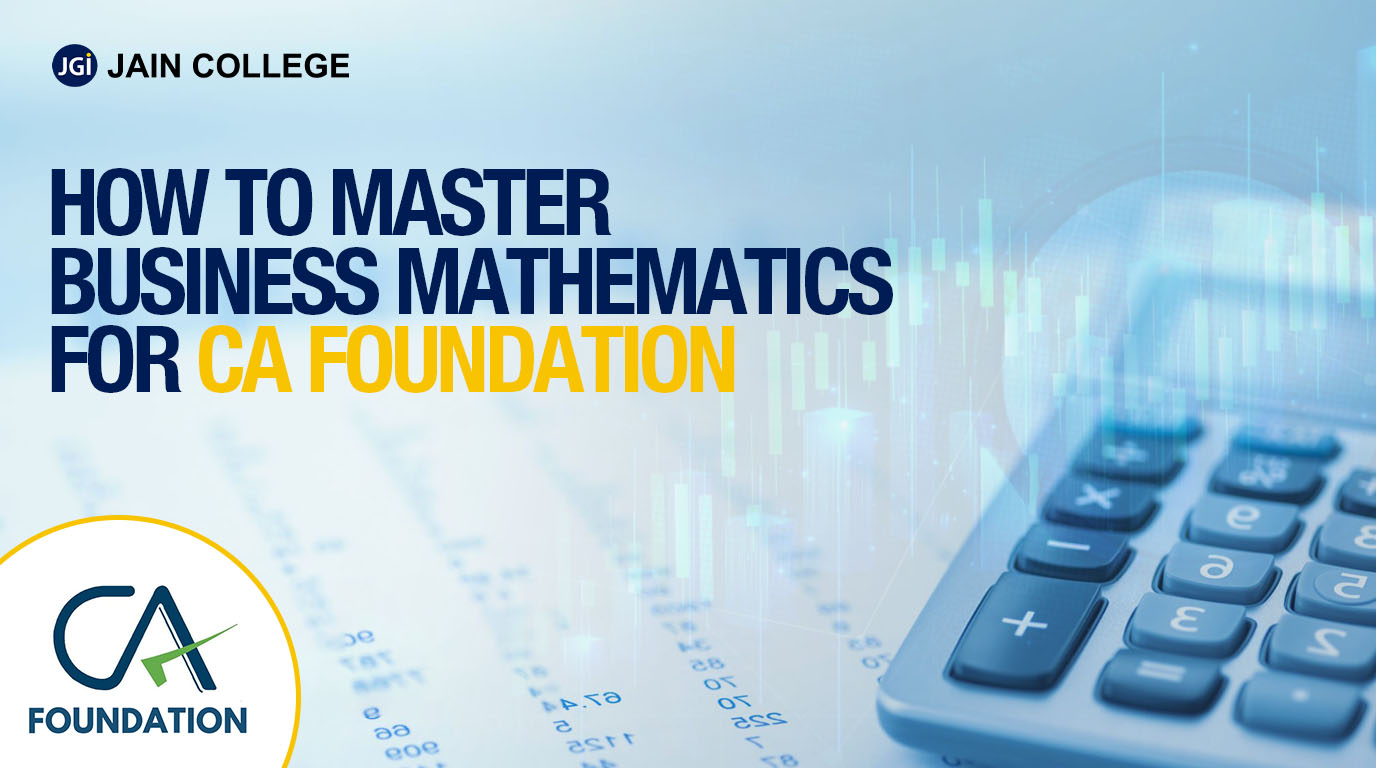
Businesses use mathematics in every department; the foundation of business finance and accounting lies in mathematics and numbers. To maintain accurate financial records, track inventory and understand the investment value before decision-making, business mathematics is critical. For a chartered accountant, mathematical and analytical skills are critical, in the CA Foundation, Business Mathematics, Logical Reasoning, & Statistics are Paper 3. Through this blog, we will learn about the subject’s syllabus and how to prepare for it.
| Part A: Business Mathematics | |
| Ratio and Proportion, Indices, Logarithms | |
| Equations and Matrices | EquationsMatrices |
| Linear Equalities | |
| Time Value of Money | |
| Basic Concepts of Permutation and Combinations | |
| Sequence and Series – Arithmetic and Geometric Progressions | |
| Sets, Functions and Relations | |
| Basic Concepts of Differential and Integral Calculus | Differential CalculusIntegral Calculus |
| Part B: Logical Reasoning | |
| Number Series, Coding, Decoding and Odd Man Out | |
| Direction Tests | |
| Seating Arrangements | |
| Blood Relations | |
| Syllogism | |
| Part C: Statistics | |
| Statistical Description of Data | |
| Measures of Central Tendency and Dispersion | Unit I: Measures of Central TendencyUnit II: Dispersion |
| Probability | |
| Theoretical Distributions | |
| Correlation and Regression | |
| Index Number and Time Series | Unit I: Index NumbersUnit II: Time Series |
Familiarising yourself with the mark distribution and paper pattern will help you make quick decisions on how you will approach the exam on the final day.
The marks distribution for the CA Foundation Maths paper is:
The exam's objective is to test the candidate’s logical reasoning and analytical skills.
The Business Mathematics, Logical Reasoning and Statistics paper of the CA Foundation course is the most difficult compared to the other three papers. Regular practice is the only effective way to clear these exams. Finding resources such as detailed explanations of concepts, question banks, solutions, etc., is not as challenging as there are plenty of books, coaching, discussion boards and resource centres. There are free and paid resources, both online and offline, that students can avail. Some resources that one can consider are –
You can avail study material from coaching classes and if you have enrolled for an integrated CA programme then you will be given ample study material from the college that is prepared by academicians and practising Chartered Accountants.
To effectively study for the Business Mathematics, Logical Reasoning and Statistics paper of the CA Foundation course, you will have to dedicate at least 3 hours every day to learning the concepts and theories and solving problems. There is no shortcut to mastering mathematical and statistical theories and formulas, even if you have high quantitative aptitude. The most recommended way to approach the quantitative component is to begin your studies every day with topics in these subjects. Every morning, dedicate at least one hour to solving problems or revising theorems. Some of the other recommended techniques are –
The CA Foundation course bears testament to the statement – there is no shortcut to success. You have to work hard, build your knowledge and conceptual clarity and strengthen your quantitative aptitude to succeed. JAIN PU College offers a CA-integrated programme for Commerce students to give them a head start in preparing for the exams strategically and with the best guidance. Visit the college website to learn more about the course and your eligibility for the same.

JAIN PU College, a part of the renowned JGI Group, is committed to empowering students with quality education.
Beyond academics, the college ensures its online content reflects the same standard of excellence. Every blog and article is meticulously vetted and proofread by subject matter experts to ensure accuracy, relevance, and clarity. From insightful educational topics to engaging discussions, JAIN PU College's content is crafted to inform, inspire, and add value to its readers, reflecting the institution's commitment to intellectual growth and innovation.
View all Blogs